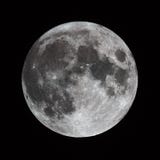Stock Photo: B33 & Ngc 2024 - Horsehead & Flame Nebula
ID 56979234 © Astroniederer | Megapixl.com
Explanation: What lights up the Flame Nebula? Fifteen hundred light years away towards the constellation of Orion lies a nebula which, from its glow and dark dust lanes, appears, on the left, like a billowing fire. But fire, the rapid acquisition of oxygen, is not what makes this Flame glow. Rather the bright star Alnitak, the easternmost star in the Belt of Orion visible just to the right of the nebula, shines energetic light into the Flame that knocks electrons away from the great clouds of hydrogen gas that reside there. The Flame Nebula is part of the Orion Molecular Cloud Complex, a star-forming region that includes the famous Horsehead Nebula. One of the most identifiable nebulae in the sky, the Horsehead Nebula in Orion, is part of a large, dark, molecular cloud. Also known as Barnard 33, the unusual shape was first discovered on a photographic plate in the late 1800s. The red glow originates from hydrogen gas predominantly behind the nebula, ionized by the nearby bright star Sigma Orionis. The darkness of the Horsehead is caused mostly by thick dust, although the lower part of the Horsehead's neck casts a shadow to the left. Streams of gas leaving the nebula are funneled by a strong magnetic field. Bright spots in the Horsehead Nebula's base are young stars just in the process of forming. Light takes about 1,500 years to reach us from the Horsehead Nebula. Description from: and
CATEGORIES
EXCLUSIVE
Sharing is not just caring, it's also about giving credit - add this image to your page and give credit to the talented photographer who captured it.:
KEYWORDS
astro astronomy astrophotography astrophysics b33 canon ccd cluster comet cosmos deep deepsky exposure flame full fullmoon galaxies galaxy horsehead interstellar long longexposure milkyway moon nebula nebulae newtonian ngc2024 night nightsky physics refractor sky star stargazing stars telescope universe





































